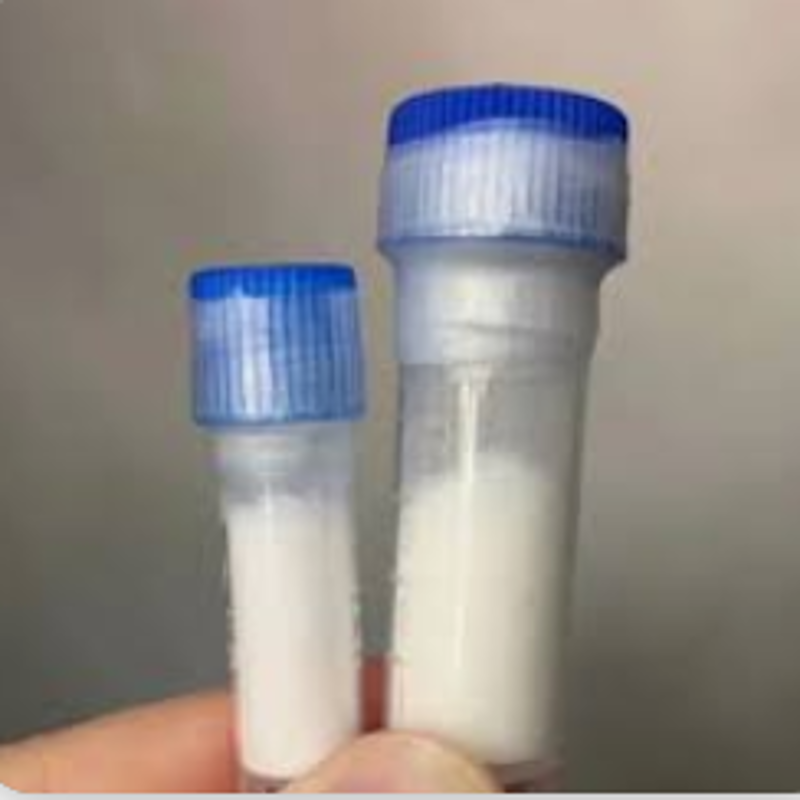-
Categories
-
Pharmaceutical Intermediates
-
Active Pharmaceutical Ingredients
-
Food Additives
- Industrial Coatings
- Agrochemicals
- Dyes and Pigments
- Surfactant
- Flavors and Fragrances
- Chemical Reagents
- Catalyst and Auxiliary
- Natural Products
- Inorganic Chemistry
-
Organic Chemistry
-
Biochemical Engineering
- Analytical Chemistry
-
Cosmetic Ingredient
- Water Treatment Chemical
-
Pharmaceutical Intermediates
Promotion
ECHEMI Mall
Wholesale
Weekly Price
Exhibition
News
-
Trade Service
The patient, a 6-year-old female, was admitted to the hospital
for 7 days with abdominal pain, abdominal distension and fever.
Physical examination: body temperature 37 °C, no abnormalities in heart and lungs, abdominal distension, large mass palpable in the abdomen, about 30 cm× 20 cm× 15 cm, obvious tenderness, hard, unclear borders, poor
mobility.
B ultrasound: a large cystic mass in the abdomen, containing calcified components
.
A small amount of pelvic effusion
.
A small amount of fluid
accumulates in the uterine cavity.
CT showed a huge cystic mass in the abdominal cavity with uneven density, and multiple irregular strips and spot-like calcifications (Figure 1).
The upper edge of the mass reaches the right subhepatic space, the lower edge to the pelvic entrance, the enhanced scan is unevenly strengthened (Figures 2, 3), its right lower part is attached to the right external iliac artery, the inferior mesenteric artery is compressed and displaced posteriorly, and the umbilical artery, the first branch of the right internal iliac artery, is thickened and twisted, and is the main blood supply artery for the mass (Fig.
4).
The mesenteric arterial and vein compression is displaced forward, and the peripheral intestinal tube is significantly compressed
.
Fluid density is seen
in the pelvis.
Fig.
1 CT scan: huge irregular cystic mass with uneven density, multiple irregular strips and spot-like calcifications inside; Fig.
2,3 CT enhanced scan showed that the parenchymal components in the arterial phase were unevenly strengthened, and the intravenous phase strengthening gradually increased; Fig.
4 Maximum density projection (MIP) showed that there were more calcifications at the edge of the tumor, and more blood supply arteries were present, and the umbilical artery was thickened, which was the main blood supply artery
for the tumor.
Diagnosis: Abdominal giant cystic mass lesion (consider: (1) teratoma, (2) ovarian germ cell tumor).
Pelvic effusion
.
Surgical findings: a small amount of light bloody fluid in the abdominal cavity was seen during surgery, amounting to about 100 mL
.
The tumor size is about 20 cm× 20 cm× 10 cm, and it is cystic.
There is a rupture and bleeding from a tumor at the entrance to the pelvis, and a small blood clot
is seen in the pelvis.
The lower edge of the tumor reaches the pelvic entrance and the upper edge reaches the right inferior hepatic space
.
The superior mesenteric arteriovenous is displaced anteriorly and upward under compression, the left upper abdominal intestinal tube is compressed and displaced to the left anterior upward, and the lower abdominal intestinal tube is displaced to the right and lower when compressed
.
The anterior, posterior and upper edges of the tumor are clearly bounded, the lower edge is adhesion to the right adnexa, and part of the omentum is adhered to the tumor, and the tumor originates from the right ovary, and the adhesions between the right fallopian tube and the tumor wall are not clearly
demarcated.
The left ovary and fallopian tube develop normally
.
Pathological general observations: giant cystic mass: 26 cm×22 cm×9 cm, gray-yellow section with bleeding and necrosis in the solid area, no sebum and hair
.
Microscopic examination showed that tumor cells were diffusely distributed, some areas were adenoid, cord-like or solid nests, the nuclear membrane was clear, the nuclear chromatin was uniform, the nucleoli were not obvious, and the S-D bodies and eosinophilic PAS were strongly positive transparent spheres (Figure 5).
Fig.
5 Pathological sections (HE×200) showed that S-D bodies and eosinophilic PAS were strongly positive transparent spheres
.
Immunohistochemistry: CK(-), EMA foci (+), Vimentin(-), AFP(-), HCG(-), PLAP(-), CD30(-), special staining PAS (+).
Pathological diagnosis: (right ovarian) yolk cyst tumor
.
Discuss:
Yolksac tumor (YST), also known as endodermal sinus tumor, is a highly malignant tumor
derived from primitive germ cells.
It was first reported
by Teilum in 1959.
The incidence of YST is low, about 80% of which occurs in the gonads, with more ovaries and more; 20% occur outside the gonads, mainly near the midline, such as the anterior mediastinum, retroperitoneum, and sacrococcygeal
.
YST is more common in children and young women, and there are no obvious clinical symptoms
.
When the tumor is large, compressing the surrounding tissues and organs, abdominal pain, bloating and other symptoms
may occur.
AFP is often elevated on YST serology, but not hCG
.
YST volume is usually large, about 5~35 cm in diameter, with capsule, gray or light brown, solid or cystic, can be seen hive-like small sac or microcyst, the sac is filled with bloody or watery fluid, often accompanied by bleeding and necrosis
.
The histological morphology of tumors is diverse, including loose reticular structure, endodermal sinus-like structure, eosinophilic bodies, acinar and glandular tubular structures, solid cell mass structures, and the mixed existence of polymorphic structures is its characteristic pathological changes
.
Yst CT is usually manifested as a single soft tissue mass with clear boundaries, solid or cystic, and bleeding can be seen in the mass, but calcification and fat density are
rare.
CT scanning, the mass is markedly unevenly strengthened, and is characterized by
gradual strengthening.
Strip-like tumor vascular shadows in solid masses are characteristic
.
Ovarian YST is often accompanied by ascites
.
Tumors are easy to invade surrounding tissues and organs, and distant metastasis often occurs in the early stage, mainly hematogenous metastasis, and lymph node metastasis is rare
.
This disease should be mainly distinguished from the following diseases: (1) Agerminoma: the significantly strengthened lobulation-like and cord-like separation in the mass is its characteristic manifestation, and most patients often have elevated LDL and alkaline phosphatase to help the identification
.
(2) Immature teratoma: often have fat components in the tumor body, often manifested as cystic, solid, fat, calcified components mixed existence
.
(3) Ovarian epithelial carcinoma: usually the age of onset is large, and the tumor marker cancer antigen 125 (CA125) is often elevated to help identify.
(4) Ovarian granulosoma: due to the tumor secreting estrogen, it often causes endocrine disorders in patients, no AFP elevation, and ascites is rare
.
In this case, the tumor was large and cystic, and the blood supply of the tumor was abundant, the parenchymal part of the tumor in the arterial phase was strengthened by the enhanced scan, and the strengthening in the venous phase gradually increased, which was consistent with
the literature reports.
However, the difference is that there are more calcifications in the tumor, which are fine sand-like and small cord-like, located at the edge of the tumor, and are difficult to distinguish
from immature teratomas in imaging performance.
Since 2 of the 3 cases of yolk sac tumor reported by L cases in this group and Li Xiumei et al.
were calcified, which was rare and inconsistent with the calcification reported in other literature, the author believes that the calcification rate of YST and the number of calcifications need to be counted
by large sample cases.
In addition, the patient's serological examination AFP was not elevated, which also made the diagnosis difficult
.
In short, the CT manifestations of ovarian YST have certain characteristics, combined with its characteristics of more common incidence in children and young women, short course of disease, abdominal pain, especially acute abdominal pain, clinical absence of menstruation and endocrine abnormalities, etc.
, which is helpful for its diagnosis and differential diagnosis
.







